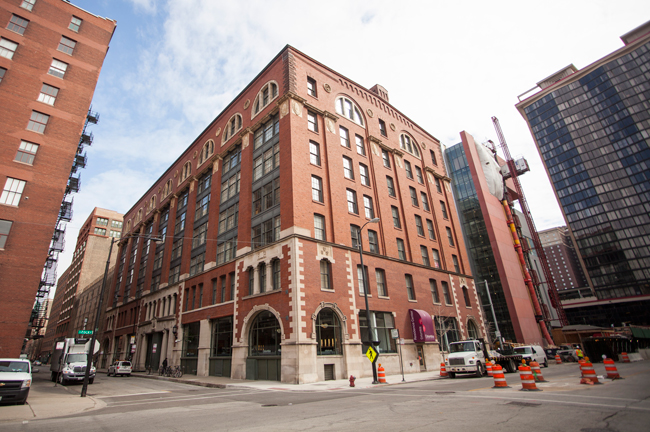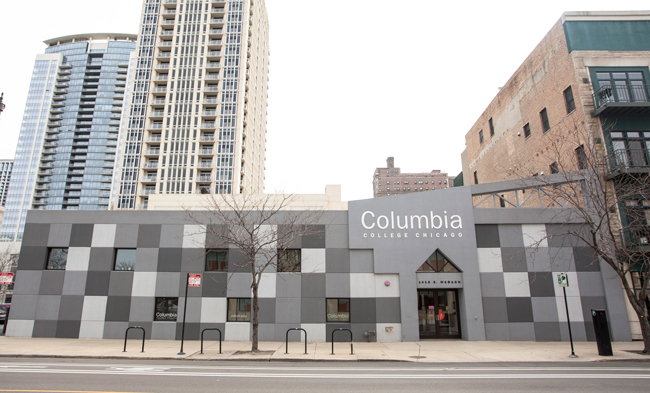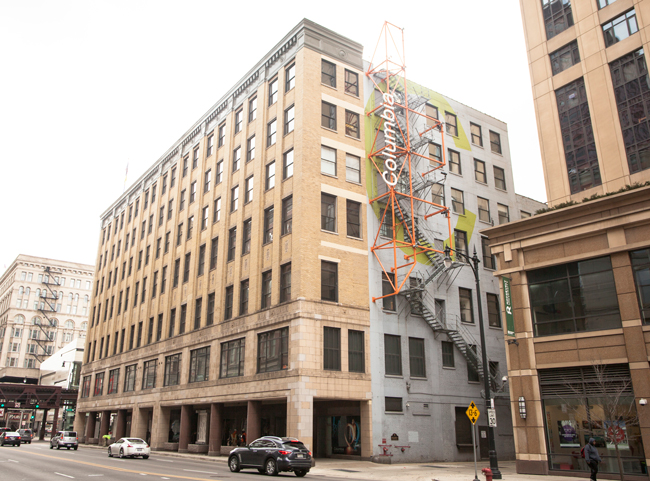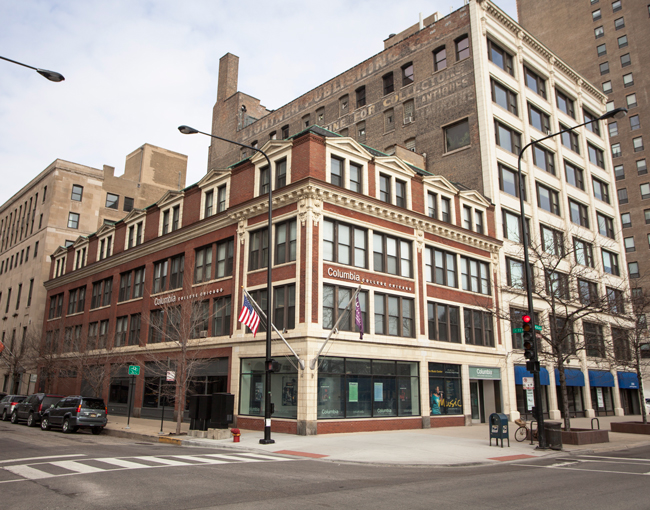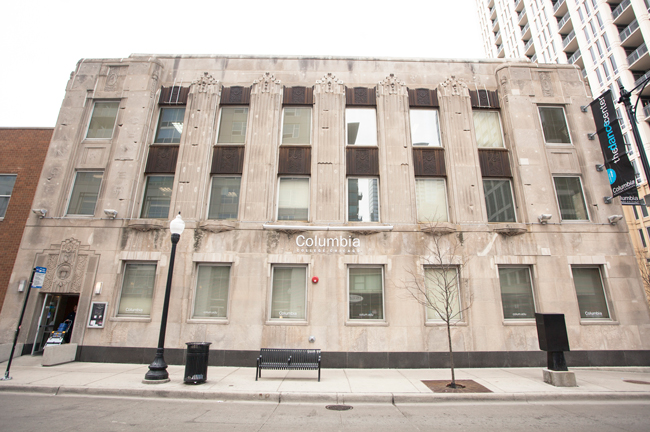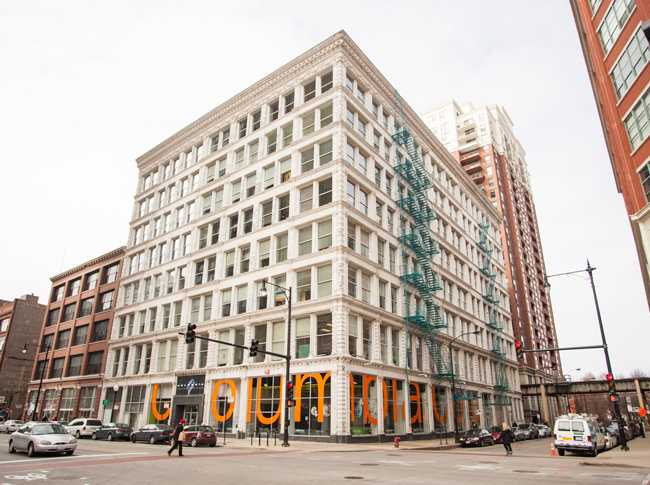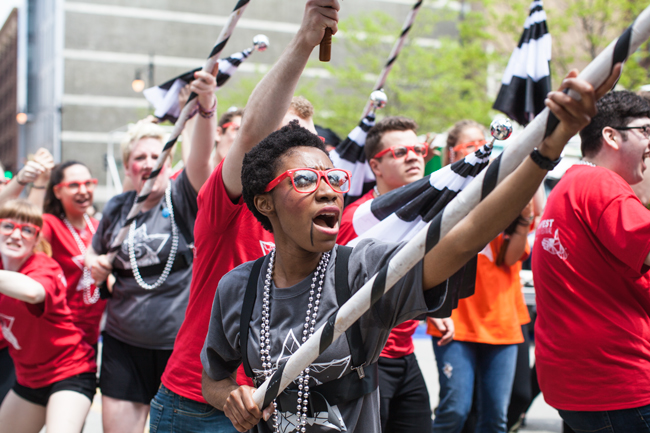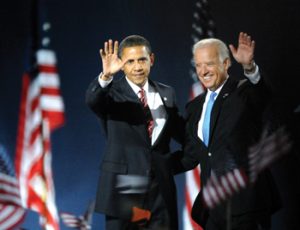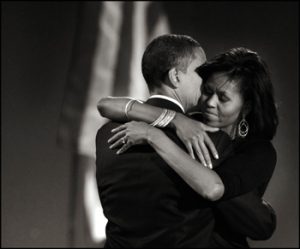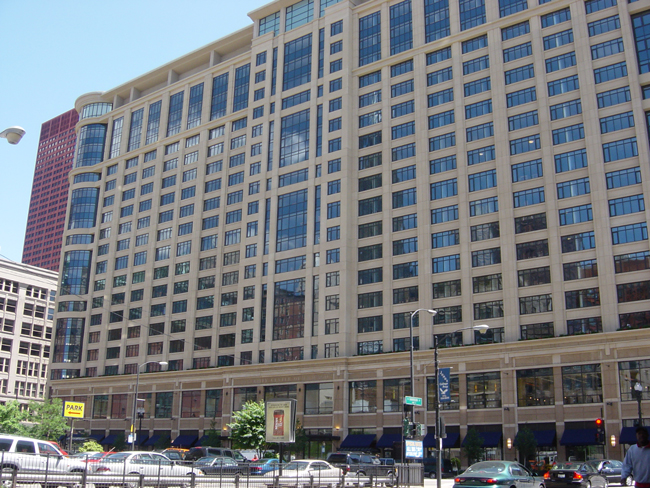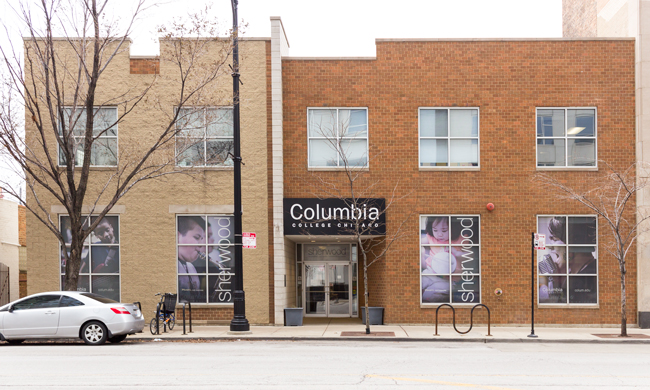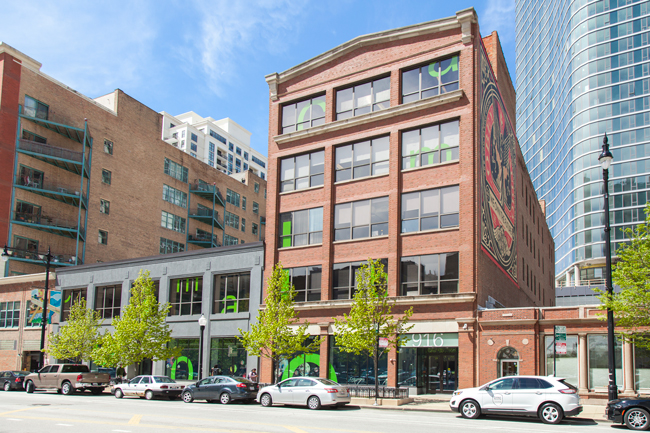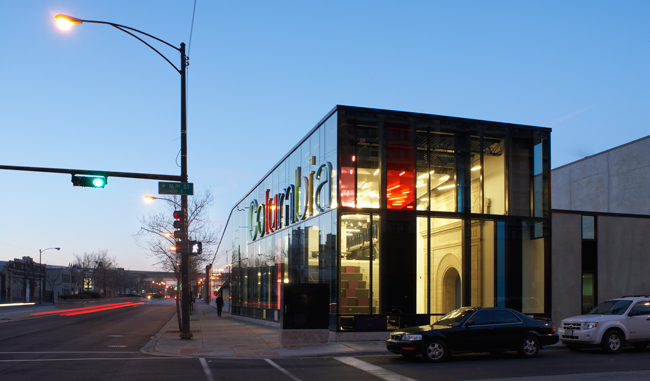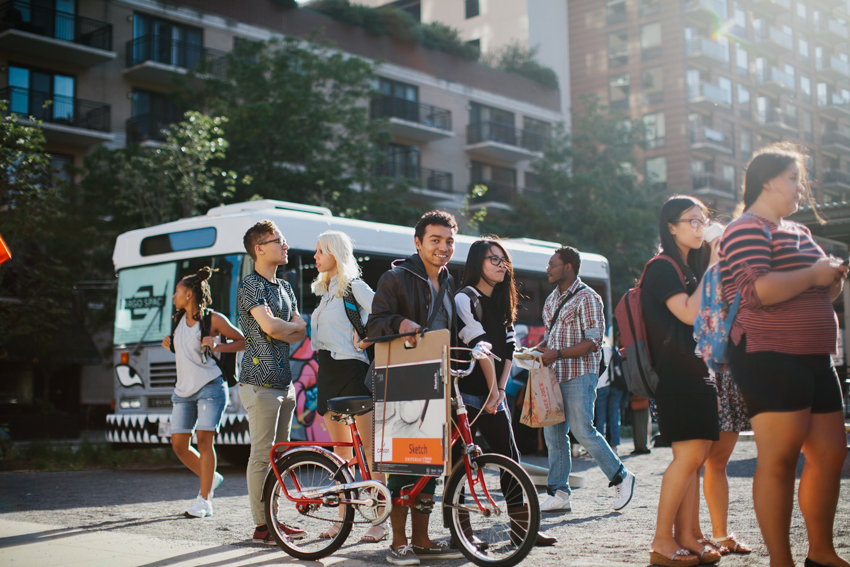
1992-2015: Continued Growth
An ever-increasing focus on the student experience and a permanent home in the South Loop continued to transform Columbia through the new millennium. Today, the college thrives as a hub of creativity and talent.
By the early 1990s, Columbia was well on its way to shedding its commuter school identity and emerging as an innovator in arts and media education and a destination college for out-of-state and international students.
Under the leadership of President John B. Duff, and starting with the 1993 purchase of 731 S. Plymouth Court—the school’s first modern, co-educational residence hall— Columbia expanded its campus through the acquisition of several historic buildings in the South Loop. The college introduced new majors and concentrations such as book and paper arts, fashion, writing, and product design, as well as interdisciplinary programs in musical theatre, interactive multimedia and broadcast journalism. In 1997, the institution officially changed its name to Columbia College Chicago.
Columbia continued its transformation into a destination college under the leadership of President Warrick L. Carter in the 2000s. While continuing its property acquisition program—and becoming one of the South Loop’s largest property owners in the process—the college also undertook new construction ventures. In 2004, Columbia, DePaul University, Roosevelt University and Robert Morris University opened the University Center, known as the “Superdorm,” at 525 S. State St. In 2010, the college opened the Media Production Center, its first purpose-built academic building, offering state-of-the-art facilities for film, television and interactive media. By the end of the decade, enrollment had reached a record high of nearly 12,500 students, making Columbia the largest private arts and media college in the country.
The college re-evaluated itself and evolved with the times—just as it always had.
But enrollment declines triggered by the Great Recession, a fiercely competitive admissions marketplace and growing public concern about the cost and affordability of higher education spurred the college to re-evaluate itself and evolve with the times—just as it always had.
Columbia’s Strategic Plan, approved by the board of trustees in May 2015, addresses the college’s most significant challenges with a comprehensive five-year program of curricular, programmatic and operational change. Developed under the leadership of President and CEO Kwang-Wu Kim, who took office in 2013, the Strategic Plan calls on Columbia to revamp its curriculum for the 21st century, implement new diversity and community engagement initiatives, rebuild its enrollment, and strengthen its technological and financial infrastructure— moving the college forward while affirming its roots as a place where aspiring creative practitioners can learn, grow and thrive.
“In the last couple of years we’ve had the courage as a community to ask ourselves a lot of tough questions, which is a great thing,” said Dr. Kim. “The schools that are going to move forward successfully are the schools that are authentic in their understanding of who they are, what their students need and where they fit into the larger world.”
John B. Duff: President 1992-2000
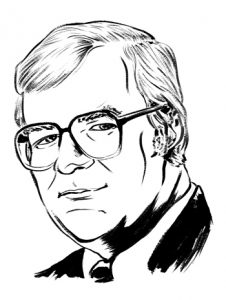 Born in 1931 in New Jersey into a working-class Irish family, John B. Duff pursued a career in higher education, spending nearly 30 years in faculty and staff roles at colleges on the East Coast. In 1985, he was appointed commissioner of the Chicago Public Library system and supervised construction of the Harold Washington Library Center, the world’s largest public library, on the corner of State Street and Congress Parkway.
Born in 1931 in New Jersey into a working-class Irish family, John B. Duff pursued a career in higher education, spending nearly 30 years in faculty and staff roles at colleges on the East Coast. In 1985, he was appointed commissioner of the Chicago Public Library system and supervised construction of the Harold Washington Library Center, the world’s largest public library, on the corner of State Street and Congress Parkway.
As Columbia’s president, Duff helped create the downtown campus students inhabit today. During his tenure, he oversaw the acquisition of the school’s first co-ed residence hall at 731 S. Plymouth Court, along with several other key campus buildings, including the Dance Center at 1306 S. Michigan Ave. and the Ludington Building at 1104 S. Wabash Ave. The school also officially changed its name to Columbia College Chicago during his presidency. Today, his name lives on in the South Loop through the honorary “John B. Duff Way” at Balbo Drive and Wabash Avenue.
Duff was regarded as a pre-eminent Civil War historian. His publications include The Structure of American History, The Nat Turner Rebellion: The Historical Event Controversy, The Irish in the United States, and Slavery: Its Origins and Legacy.
Following a long illness, Duff died in Palm Desert, California, in 2013 at age 82.
Warrick L. Carter: President 2000-2013
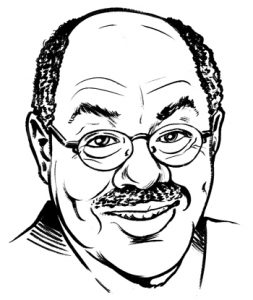 Virginia native Warrick L. Carter grew up in a musical family, singing in gospel choirs alongside his parents and brothers. After a long career as a music professor at several institutions, he spent four years as director of entertainment arts for Walt Disney Entertainment. A celebrated composer and performer, Carter has also written and lectured extensively on the arts, music history and culture. He is a two-time recipient of the National Black Music Caucus Achievement Award and a member of the International Jazz Educators Hall of Fame.
Virginia native Warrick L. Carter grew up in a musical family, singing in gospel choirs alongside his parents and brothers. After a long career as a music professor at several institutions, he spent four years as director of entertainment arts for Walt Disney Entertainment. A celebrated composer and performer, Carter has also written and lectured extensively on the arts, music history and culture. He is a two-time recipient of the National Black Music Caucus Achievement Award and a member of the International Jazz Educators Hall of Fame.
Carter was appointed president of Columbia College Chicago in 2000. Under his leadership, Columbia enrolled upwards of 12,000 students in 2008—more than double the students enrolled 20 years before—and added many new programs, including game design and art history.
Under his leadership, Columbia enrolled upwards of 12,000 students in 2008 … and added many new programs, including game design and art history.
As Columbia continued to expand its campus in the South Loop, Carter oversaw the creation of the Media Production Center, Columbia’s first newly constructed building, and partnered with local universities to construct the University Center “Superdorm” that helped shift Columbia’s status from commuter college to the destination arts school it is today. During this time, the urban campus footprint doubled to 2.5 million square feet of occupied classroom, office, exhibit, performance and residence hall spaces, making the college the largest single presence in the South Loop.
Carter also led the creation of several new student-centered initiatives, including Manifest, the annual urban arts festival for graduating students, and ShopColumbia, the boutique at 623 S. Wabash Ave., where students and alumni learn to market and sell their work.
Additionally, the president established new funding programs to address the financial needs of students and helmed the college’s first comprehensive fundraising campaign.
Carter retired in 2013.
Kwang-Wu Kim: President 2013-Present
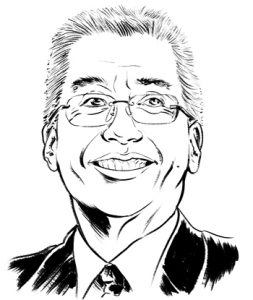 As a child growing up in Hyde Park, Kwang-Wu Kim would beg his parents to drive past the Shell Oil sign that sat atop the building at 624 S. Michigan Ave. Today, the vibrant red and yellow sign is long gone, but Dr. Kim, Columbia College Chicago’s president and CEO since July 2013, keeps a framed photograph of it in his office, marveling at the fact that he leads the institution that now owns the building.
As a child growing up in Hyde Park, Kwang-Wu Kim would beg his parents to drive past the Shell Oil sign that sat atop the building at 624 S. Michigan Ave. Today, the vibrant red and yellow sign is long gone, but Dr. Kim, Columbia College Chicago’s president and CEO since July 2013, keeps a framed photograph of it in his office, marveling at the fact that he leads the institution that now owns the building.
Dr. Kim came to Columbia knowing the realities of working as a creative professional, having pursued a career as a concert pianist in his 20s. Then, at the age of 35, he changed direction, becoming artistic and administrative director of El Paso Pro Musica, an organization that presents chamber music concerts and sponsors music education programs in the community. His time in El Paso transformed his professional path, setting in motion a series of career decisions that eventually led to his appointment as Columbia’s 10th president.
“[We’ve] always been a school that clearly believes young creatives inherently have value in the world.”
Dr. Kim has been a senior administrator and professor at several higher education institutions, and most recently served as dean and director of the Herberger Institute for Design and the Arts at Arizona State University. In addition to serving as Columbia’s president, he is a tenured member of the Music Department faculty.
In 2015, the board of trustees approved Achieving Our Greatness: A Strategic Action Plan for Columbia College Chicago, 2015-2020, which outlines an ambitious blueprint for how Columbia can prepare students to be “creative agents in the world.” In guiding the development of the Strategic Plan, Dr. Kim recognized the links that connect Columbia’s past and future, especially regarding its mission as an institution whose students aspire to author the culture of their times. “[We’ve] always been a school that clearly believes young creatives inherently have value in the world,” he said.
From Vice to Nice
Remembering the South Loop’s shady past

This cover from the 1977 Art Department Handbook illustrates the South Loop’s progression: Columbia College in the foreground, set against a neighborhood of girly shows and pawn shops.
Today, the South Loop bustles with tens of thousands of college students, but travel back 100 years in time and you’d see a very different kind of crowd.
From the 1860s until 1910, the area now known as the South Loop—extending approximately from Jackson Boulevard down to Cermak Road, then 22nd Street—was Chicago’s vice district, nicknamed the Levee. Run by some of Chicago’s most notoriously crooked politicians, including 1st Ward aldermen “Hinky-Dink” Kenna and “Bathhouse” John Coughlin, the neighborhood offered every form of debauchery imaginable.
Politicians protected the Levee’s gambling, prostitution and drug dens. On 15th Street and Wabash Avenue, down the street from today’s music and theatre classrooms, Kenna and Coughlin threw an annual fundraiser called the First Ward Ball, where politicians and police mingled with petty criminals (and consumed record amounts of liquor) in a wild celebration of vice. Each ball included a grand march led by Coughlin and the Everleigh Sisters, the most influential madams in the district.
In an effort to improve Chicago’s image in 1910, the city pushed the Levee district south to 18th Street, but the South Loop remained a disreputable area into the 1980s. (On Wabash and Balbo, the 606 Club held strip shows frequented by a certain Playboy.)
Columbia purchased its first South Loop building, 600 S. Michigan Ave., in 1975, and subsequent developments transformed the area. Created in the late ’70s, Dearborn Park, a 51-acre residential and recreational development, replaced the disused rail yard behind Dearborn Station. Throughout the ’70s, ’80s and ’90s, Columbia snapped up buildings in the area to accommodate growing enrollment, and the combination of students and residents taking over the South Loop transformed the neighborhood into one of the city’s most appealing urban areas.
Terri Hemmert: Rock ‘N’ Roll Radio Pioneer
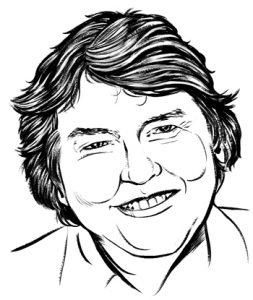 “Chicago’s Finest Rock” radio station, 93WXRT, launched in 1972—and Terri Hemmert came on board as an overnight DJ soon after. A few years later, she started teaching rock music history at Columbia—a fitting subject, because she was making history herself. In 1981, she became Chicago’s first female morning drive personality, meeting music legends like the Ramones and Paul McCartney along the way. “If I’d listened to all the people who told me that a woman couldn’t make it on the radio, I’d be a retired school teacher,” she said.
“Chicago’s Finest Rock” radio station, 93WXRT, launched in 1972—and Terri Hemmert came on board as an overnight DJ soon after. A few years later, she started teaching rock music history at Columbia—a fitting subject, because she was making history herself. In 1981, she became Chicago’s first female morning drive personality, meeting music legends like the Ramones and Paul McCartney along the way. “If I’d listened to all the people who told me that a woman couldn’t make it on the radio, I’d be a retired school teacher,” she said.
Today, Hemmert has been on the air at WXRT for four decades, and she earned a place in the National Radio Hall of Fame in 2010, as well as her own Chicago holiday— November 3, 2013—which Mayor Rahm Emanuel named “Terri Hemmert Day” to honor her 40th anniversary as a DJ. She continues to serve as a professional Beatles fan on WXRT, hosting the show Breakfast with the Beatles on Sunday mornings and emceeing Chicago’s annual Fest for Beatles Fans (formerly known as Beatlefest).
Jim DeRogatis: Outspoken Critic
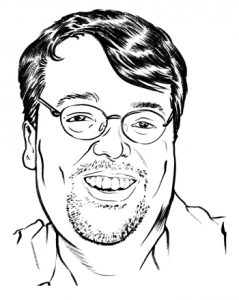 With bylines in Spin, Guitar World, Penthouse and GQ, full-time Columbia College Chicago lecturer Jim DeRogatis shares firsthand tales of the music trade in his writing classroom. But his expertise expands past the page: For nearly 20 years, he and fellow rock critic Greg Kot have hosted the nationally syndicated radio program Sound Opinions, an open forum for music and pop culture debates that’s among the top three most-downloaded music podcasts on iTunes.
With bylines in Spin, Guitar World, Penthouse and GQ, full-time Columbia College Chicago lecturer Jim DeRogatis shares firsthand tales of the music trade in his writing classroom. But his expertise expands past the page: For nearly 20 years, he and fellow rock critic Greg Kot have hosted the nationally syndicated radio program Sound Opinions, an open forum for music and pop culture debates that’s among the top three most-downloaded music podcasts on iTunes.
“The energy, enthusiasm, diversity of interest … the fire in the belly that I get any time I’m in front of any class at Columbia just feels like home.”
As a former editor for Rolling Stone and longtime rock critic for the Chicago Sun-Times before he moved to radio, DeRogatis has always been an industry loudmouth. He left Rolling Stone after the magazine refused to publish his negative review of a Hootie and the Blowfish album; he’s drawn the ire of musicians like Ryan Adams, Billy Corgan and Wayne Coyne; and he blew the whistle on R. Kelly’s child pornography scandal in 2002.
At Columbia, DeRogatis trains a new generation of opinionated writers in his courses on music, media and reviewing the arts. “The energy, enthusiasm, diversity of interest … the fire in the belly that I get any time I’m in front of any class at Columbia just feels like home,” he says. “It’s a privilege to work with kids who are so eager to get out there.”
Ivan Brunetti: Cartoonist Virtuoso
When it comes to comics in the classroom, few have been as influential as artist and Columbia associate professor of design Ivan Brunetti. He won an Eisner Award, one of the top recognitions in comics, for his book Cartooning: Philosophy and Practice, which basically serves as a bible for graphic storytellers. On top of that, he’s been creating darkly funny comics since the ’90s, including 2007’s collection Misery Loves Comedy and 2013’s Aesthetics: A Memoir. Plus, if you’re a New Yorker reader, you might recognize his hyper-simple style—he’s created 10 covers for the venerable magazine since 2007.
Comics are gaining recognition as a legitimate art form, and Brunetti has helped put them in the spotlight. In 2006, he edited An Anthology of Graphic Fiction, Cartoons, and True Stories, a collection The New York Times called “a manifesto of comics’ coming of age.”
Home Sweet Home
Where Columbia lived starting in 1993
Plymouth Court
731 S. Plymouth Court
Occupied: 1993–present
Houses: Residence hall, Residence Life offices, fitness center, health center
Trivia: Designed in 1897 by Howard Van Doren Shaw, best known for his work on palatial residences in the Gold Coast and North Shore. The fourth through sixth floors formerly housed R.R. Donnelley Publishing Company’s printing presses.
Theater/Film Annex
1415 S. Wabash Ave.
Occupied: 1996–present
Houses: Classroom space, production sites
Trivia: Shaymen Salk Arenson Sussholz & Company designed the latest renovation of the Annex building in 1996 for Columbia.
33 E. Congress Parkway
Occupied: 1997–present
Houses: Administrative offices, radio station, classrooms, student lounge, computer lab, recording studios
Trivia: A bank vault is still installed in the basement, a relic of the building’s past life as Congress Bank.
Music Center
1014 S. Michigan Ave.
Occupied: 1998–present
Houses: Music classrooms, offices, performance spaces
Trivia: Previous occupants include a shingle distributor, a lumber company and an electrical parts manufacturer.
Dance Center
1306 S. Michigan Ave.
Occupied: 1999–present
Houses: Dance performance and rehearsal spaces
Trivia: Designed in 1930 by architect Anker S. Graven in art deco style for the Paramount Publix Corporation, a venue where independent cinema operators could view and rent films for exhibition at their theaters.
1104 S. Wabash Ave.
Occupied: 1999–present
Houses: Conaway Center; Glass Curtain Gallery; Film Row Cinema; Cinema Art and Science facilities; Center for Book, Paper and Print
Trivia: Designed by William LeBaron Jenney, the inventor of the skyscraper, this building is the world’s first entirely terra cotta-clad skyscraper. The building was named a City of Chicago landmark in 1996 and is listed on the National Register of Historic Places.
Celebration in the South Loop
Manifest revels in students’ creativity
Larger-than-life puppets cavort down Wabash Avenue. Dancers twirl and stomp from the stage to the street. Film screenings, gallery shows, fashion runways, costumes, street performances, concerts and any other artistic revelry imaginable—everything comes to life at Manifest Urban Arts Festival, the uniquely Columbia experience that electrifies the South Loop one day each May.
Manifest serves as a sort of yearly pep rally—and a chance to let Columbia’s creative energy literally spill into the streets. The celebration began as MayFest in 2002. By 2004 it evolved into Manifest, the student-produced, one-day festival where graduating students show off their best work.
Each year, the Columbia community elects a student creative director to guide the festival’s vision. Manifest 2016 creative director Cassidy Kapson (’16) planned vibrant, colorful designs to complement the year’s theme: Animate.
“Manifest is such an explosion of energy every year, and I think the design of the festival should reflect that,” said Kapson. “I really wanted [to] express how vibrant and unique all of us students really are.”
1990s: Chris McKay
Who knew playing with toys could launch a legitimate career? Director, producer and editor Chris McKay (BA ’91), an integral member of The Lego Movie franchise and the cult show Robot Chicken, has pulled it off.
When McKay moved from Chicago to Los Angeles, he started in the hallways of Adult Swim. In addition to directing, producing and editing multiple seasons of Robot Chicken, he also created the series’ first end title sequence. He also directed several episodes of Moral Orel, created by fellow Columbia alum Dino Stamatopoulos (’86).
McKay then served as the co-director, editor and animation director on the 2014 blockbuster The Lego Movie. At the time, many industry insiders considered the film a glorified toy commercial, but it found major success in the box office and the critics’ stand. Now, McKay is executive producing The Lego Movie Sequel and directing the highly anticipated The Lego Batman Movie, which will be released in February 2017.
2000s: Iliana Regan
Michelin-starred restaurant Elizabeth’s owner and head chef Iliana Regan (BA ’05) tells stories. She told them as a fiction writing student at Columbia College Chicago, and she continues today at her restaurant in the Lincoln Square neighborhood. “I spend a lot of time thinking about food in the same way that I thought about stories,” she says. “What is the plate? What are the ingredients? What is it conveying? What am I saying?”
Elizabeth emerged from an underground supper club called One Sister, launched in 2010 out of Regan’s Andersonville apartment, which quickly gained notoriety in the Chicago foodie scene. Regan calls her approach “new gatherer cuisine,” a philosophy built around fresh, organic, seasonal ingredients. She works with local farmers and hunters and even forages for wild ingredients (like frog legs) herself.
2010s: Frank Waln
Frank Waln (BA ’14), a Lakota rapper, producer and activist hailing from the Rosebud Reservation in South Dakota, has quickly risen to the forefront of discussions on Native American visibility with his hard-hitting anthems of personal empowerment and political criticism.
Waln, a graduate of Columbia’s Audio Arts and Acoustics program, is best known for his public stance against the Keystone XL Pipeline, a proposed oil route from Canada to Texas, which President Obama rejected in November. Waln was featured on MTV’s Rebel Music for his anti-Keystone activism and performed at a protest concert alongside Willie Nelson and Neil Young in 2014.
Waln continues to rap unapologetically about his life and people. He also speaks at schools across the country in an effort to empower indigenous youth.
More Notable Alumni
Aidy Bryant (BA ’09)
Actress (Saturday Night Live)
Don’t Fret
Chicago Reader’s 2014 Street Artist of the Year
Jennifer Farrington (BA ’93)
President and CEO, Chicago Children’s Museum
Ayanna Floyd (MFA ’98)
Co-executive producer (Empire, Hannibal, Private Practice)
Paul Garnes (BA ’96)
Executive producer (Selma), producer at BET
Chester Gregory (BA ’95)
Singer, Broadway actor (Motown: The Musical, Dreamgirls, Hairspray, Tarzan)
Agnes Hamerlik (BA ’12)
Fashion designer, showcased at Chicago Fashion Week and New York Fashion Week
Rashid Johnson (BA ’00)
Photographer and fine artist Pablo
Martinez Monsivais (BA ’94)
Pulitzer Prize-winning photojournalist
Michelle Monaghan (’99)
Actress (True Detective, Due Date, Made of Honor)
Tonya Pinkins (BA ’96)
Tony Award-winning actress (Jelly’s Last Jam, All My Children, Army Wives)
Annie Tighe (MFA ’02)
Emmy Award-winning editor (Top Chef)
Nadine Velazquez (BA ’01)
Actress (The League, My Name is Earl, Flight)
Eduardo Vilaro (MA ’99)
Artistic director and CEO, Ballet Hispanico; Founder, Luna Negra Dance Company
Nan Warshaw (MA ’93)
Founder and co-owner, Bloodshot Records
Diane Weyermann (MFA ’92)
Academy Award-winning executive vice president of documentary film at Participant Media
A Student-Centered College
How Columbia amped up its student experience
Columbia purchased its first dormitory in 1993, marking a turning point for the school: from scrappy little college-that-could to a more student-centered, destination institution.
The change accompanied, or perhaps contributed to, a dramatic rise in students. By 2004, enrollment had increased to more than 10,000—just in time for the completion of Columbia’s second residence hall, the University Center “Superdorm.” Over the next decade, Columbia continued to move away from its perception as a commuter college. In 2015, 70 percent of freshmen lived on campus and 55 percent of the incoming class came from out of state.
Columbia transformed from scrappy little college-that-could to a more student-centered, destination institution.
To better accommodate residential students and create a compelling collegiate experience, Columbia redoubled its efforts to expand services for students and make them feel welcome on the school’s unique urban campus.
In 2000, Columbia created the Division of Student Affairs, now Student Success, to develop a full spectrum of services and experiences beyond the classroom, including a multicultural affairs office, a career center, student spaces and venues to showcase student work. In 2008, the school opened ShopColumbia, a boutique at 623 S. Wabash Ave., where students and alumni learn to market and sell their creations.
Today, Columbia offers more than 130 recognized student organizations that serve student interests, most of which did not exist 15 years ago.
Uncovering The Past
Heidi Marshall, head of College Archives & Special Collections, digs into Columbia’s history
Even though Columbia College Chicago opened in 1890, the College Archives & Special Collections only began in August 2005. In the beginning, College Archives & Special Collections Head Heidi Marshall worked alone in a “room with a computer” in the library. Today, the group has expanded to seven employees with permanent office space at 619 S. Wabash Ave. Running the institution’s archives is a team effort: The staff and student employees piece together the college’s history. They scour eBay for Columbia ephemera, help researchers navigate their collections, delve into president family trees, digitize college documents and undertake countless other things to uncover and tell Columbia’s vibrant and ongoing story. (Plus, Archives served as an invaluable source for this issue of DEMO.) Marshall talked with us about why the Archives are important to Columbia’s history.
Why did Columbia start the Archives?
Everyone realized there was a rich history, and that we were in danger of losing that history. When I started in August of 2005, people came out of the woodwork. The second day I was here I had someone call and say, “I have been waiting for you for 30 years. I want you to have these records.” It’s just great to be able to celebrate the history of this school because it’s an amazing place.
What sorts of projects do you work on?
The first year I was here, I think I spent a year working on just the biographies of the presidents, because that had never been done. Sometimes I think you have to enjoy being a detective and figuring out puzzles, because that’s what we do.
“Sometimes I think you have to enjoy being a detective and figuring out puzzles, because that’s what we do.”
What’s involved in putting presidential biographies together?
Just lots and lots of searching. Talking to some folks who may or may not know anything. [For example,] the story was that [former president] Norman Alexandroff came in through Ellis Island. I couldn’t find his name. Turns out, he came in through Philadelphia. So you have to keep looking around because sometimes myth and fact are a little at odds.
When you’re researching someone, do you feel like you’re building a personal relationship?
All the time. You start calling them by their first name. “[Founder] Mary [Blood] did this, and Mary did that.”
Why are archives important for a place like Columbia?
If you don’t know what you’ve done in the past then how do you plan well for your future? You have to be able to see the evolution that takes place over time in an institution. There’s evidence of great programming. There’s evidence of things that didn’t work out so well. I think archives help a school build pride in their accomplishments. It helps students and alumni feel a certain pride in where we’ve come from.
Capturing Hope
Barack Obama’s 2008 election as U.S. president was one for the history books—and photographed by the Columbia community
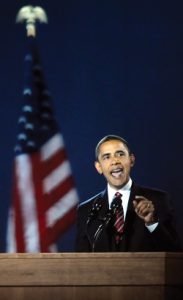
President-elect President Barack Obama addresses the crowd, as photographed by then-student Jody Warner (’09)
An iconic moment in U.S. history played out live on November 4, 2008, in Chicago’s Grant Park—essentially Columbia College Chicago’s front yard. There, Barack Obama, the first African American voted into the White House, held his election-night rally before an estimated crowd of 240,000. Millions more watched throughout the world. Columbia photographers were there to capture it.
John H. White, a Pulitzer Prize-winning photographer from the Chicago Sun-Times and a Columbia instructor of photojournalism for three decades, had sent many students into the same park over the years on photographic drills and training assignments. That night, he found himself shooting history in the making.
Photography student Jody Warner (’09) was reportedly the only student journalist on the media stand that night, shooting side by side with professionals from around the world.
Pablo Martinez Monsivais (BA ’94), a staff photographer at the Associated Press Washington Bureau, had already covered the Office of the President for a decade. But that night, he said his mind raced back to a sentence White uttered in a 1991 spring semester class—a statement he didn’t fully grasp until his return to Grant Park 17 years later. “[He told us], ‘Photojournalism is a front-row ticket to history.’”
“Those images are just as alive today as they were in November 2008,” White said. “And a moment that was really significant and great then will remain great in history.”
Home Sweet Home
Where Columbia lived starting in 2003
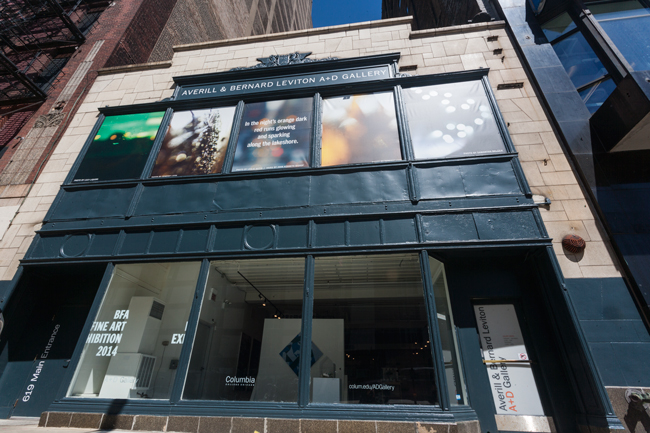
619 S. Wabash Ave.
Occupied: 2003–present
Houses: College Archives & Special Collections, mailroom, Averill & Bernard Leviton Gallery
Trivia: In the 1920s, owner Al Tearney opened a cabaret here. By 1927, the U.S. Circuit of Appeals issued a mandate to shut it down.
University Center
525 S. State St.
Occupied: 2004–present
Houses: Dormitories for Columbia as well as DePaul, Roosevelt and Robert Morris universities
Trivia: Originally called the “Superdorm,” the University Center houses more than 1,700 students and is one of the largest multischool residence halls in the country.
Sherwood Community Music School
1312 S. Michigan Ave.
Occupied: 2007–present
Houses: Classrooms, studios, keyboard labs, a 100-seat auditorium
Trivia: Acoustical engineers at Shiner and Associates designed this building, constructed in 1997, with high-quality sound in mind.
916 S. Wabash Ave.
Occupied: 2007–present
Houses: Interactive Arts and Media Department, dance studio spaces, Student Communications, The Loft, Student Engagement
Trivia: Today’s 916 S. Wabash Ave. was originally two separate buildings. In 2007, Columbia combined the 916 and 1000 S. Wabash Ave. buildings. Previously, 1000 S. Wabash Ave. housed renowned African-American comedy club All Jokes Aside, operated by parttime Business and Entrepreneurship faculty member Raymond Lambert.
Media Production Center
1600 S. State St.
Occupied: 2010–present
Houses: Film production sound stages, motion-capture studio, digital labs, animation suites, fabrication shop, classrooms
Trivia: Columbia’s first newly constructed building was designed by Studio Gang Architects in 2009. A time capsule for the college was buried during construction, to be opened in 2040.
First in Line
The college continues its tradition of welcoming first-generation college students
Though Columbia College Chicago has come a long way from its humble roots, some of the college’s core values have passed the test of time—including a commitment to serving first-generation college students.
First-generation college students are four times more likely to drop out of college than their peers whose parents received fouryear degrees, according to the nonprofit I’m First. Columbia offers a straightforward application process and accessible staff to help students navigate enrollment, and its Conaway Achievement Project provides special services, including workshops and academic advising, to first-generation students.
“As a first-generation student whose parents don’t have any idea how [the application process] works, it was very easy for me to navigate by myself,” says Creative Writing student Frank EnYart (’17). “People were really willing to help.”
Columbia has encouraged first-generation college students since the 1940s, when working-class World War II veterans flooded college campuses. Then, in the 1960s, Columbia reaffirmed its commitment to open admissions.
Today, about 20 percent of Columbia College Chicago students are first-generation. Many are attracted by the diverse student body and creative, determined atmosphere.
“I think Columbia understands and appreciates people who want to work to get where they are,” says Aly Mitchell (BA ’16), who studied music business and has worked on live events throughout Chicago. “Something I observed really early on is that everybody who goes to Columbia really wants to be here. You come to Columbia with a vision and a drive.”
“Something I observed really early on is that everybody who goes to Columbia really wants to be here. You come to Columbia with a vision and a drive.”
Xavier Tanner (BA ’15), a musician who studied Audio Arts and Acoustics, says his classes prepared him to enter the industry with a professional portfolio. Plus, he says, “With that degree backing you, it gives you a level up.”
But for many first-generation students, the value of a college degree goes beyond practical applications.
“Both of my parents had tried to go to college and couldn’t afford it and just couldn’t make it work,” Mitchell says. “So for me, that was a big thing … being able to pursue my career while still maintaining my academics.”
Viral Ventures
Student Kevin Droniak and his grandma make it big on YouTube
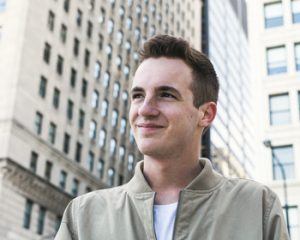 Kevin Droniak (’19) is a bit of a grandma’s boy—and it pays off. Droniak began making YouTube videos with his Grandma Lil in 2012 under the username thiskidneedsmedicine, and the viral videos featuring the pop culture-challenged Lil’s take on everything from Miley Cyrus’ Instagram to “Hotline Bling” have earned them a following of half a million subscribers. It also pays an impressive income for the sophomore journalism student; he earns $1,500 a month from YouTube, plus occasional sponsorship deals from brands like Target.
Kevin Droniak (’19) is a bit of a grandma’s boy—and it pays off. Droniak began making YouTube videos with his Grandma Lil in 2012 under the username thiskidneedsmedicine, and the viral videos featuring the pop culture-challenged Lil’s take on everything from Miley Cyrus’ Instagram to “Hotline Bling” have earned them a following of half a million subscribers. It also pays an impressive income for the sophomore journalism student; he earns $1,500 a month from YouTube, plus occasional sponsorship deals from brands like Target.
The online videos have earned them half a million subscribers.
Media outlets such as Huffington Post and Teen Vogue have taken notice of the unexpected comedy team. Droniak and Grandma Lil even Skyped in twice for segments on Jimmy Kimmel Live.
Droniak stays in touch with his grandma through phone calls and Instagram (which he taught her how to use). How does Grandma Lil respond to her online popularity? “She thinks she’s like a full-blown celebrity now,” says Droniak. “She says it makes her feel younger.”
Curious Collections
Staff experts highlight artifacts and offerings from centers on campus
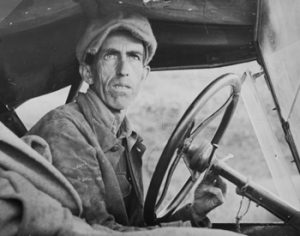
“Ditched, Stalled and Stranded,” San Joaquin Valley, California, by Dorothea Lange, from the Museum of Contemporary Photography
Museum of Contemporary Photography
Where: Museum of Contemporary Photography (MoCP) is the Midwest’s only accredited museum dedicated to photography (now celebrating its 40th anniversary).
Who: Karen Irvine, MoCP curator and associate director
What: Irvine lauds the museum’s collection of nearly 500 photographs from Dorothea Lange, best known for photographing migrant workers during the Great Depression, which contains “many of Lange’s work prints that illustrate her experiments with printing and cropping in the darkroom.”
Center for Book, Paper and Print
Where: Center for Book, Paper and Print is a new center created by the merging of Anchor Graphics and the Interdisciplinary Arts Department’s former Center for Book and Paper Arts.
Who: David Jones, executive director
What: Jones first partnered with Columbia in 2006, when Anchor Graphics, his lithography and etching workshop, offered lectures and demonstrations to students and the community. Now more focused on curricular matters, the center caters to nearly 30 different classes. “We’re seeing more students interested in not only printmaking, but also the book and paper arts,” Jones says.
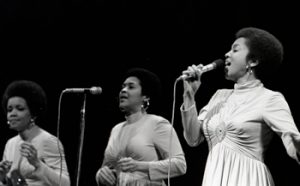
“The Staples Singers” by Sue Cassidy Clark, from the Center for Black Music Research Library and Archives
Center for Black Music Research
Where: The Center for Black Music Research (CBMR) is devoted to research, preservation and dissemination of the history of black music on a global scale.
Who: Laurie Lee Moses, CBMR archivist and digital librarian
What: Moses references many fascinating collections, including the work of photojournalist Sue Cassidy Clark, who covered soul and pop music artists in the 1960s and 1970s; Kenneth Bilby’s comprehensive oral history of the foundations of Jamaican popular music; and Micah Salkind’s oral history exploring Chicago house music.
Then and Now: Student Spaces
Then: Columbia College Chicago added dorms, along with a host of student services and activities, in the 1990s and 2000s to bolster its shift into more of a destination school, adding a heavier focus on student satisfaction outside the classroom in the process.
Now: Plans are underway to open a new Student Center on the corner of 8th Street and Wabash Avenue as early as fall 2018. Working with administrators and student groups from across campus, the architecture, planning and design firm Solomon Cordwell Buenz proposed preliminary designs for the space that will encourage student collaboration and community. Ideas include studios, nap rooms, a rooftop garden and a multipurpose event space.
